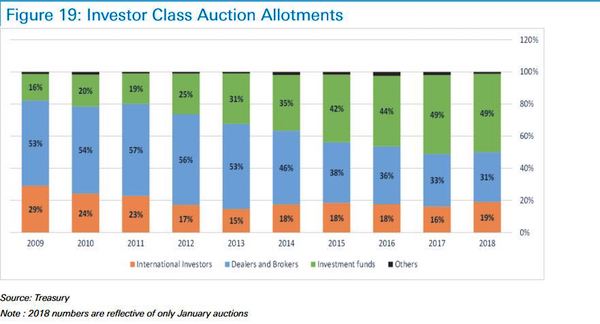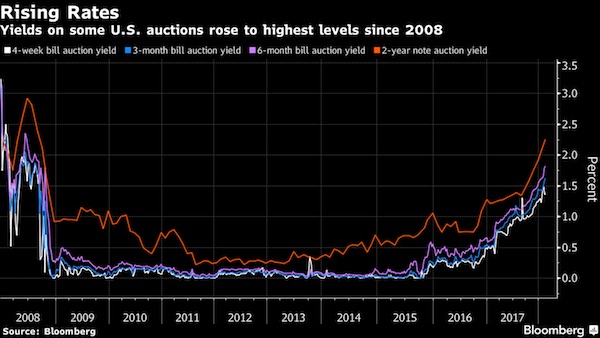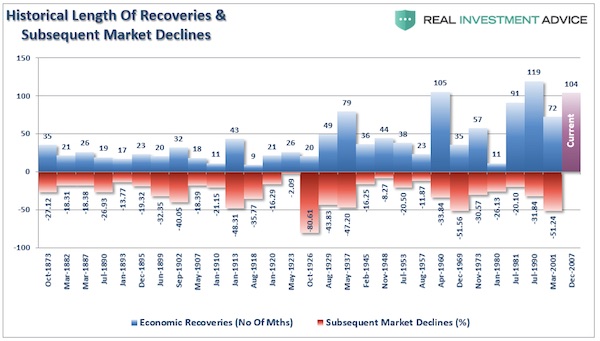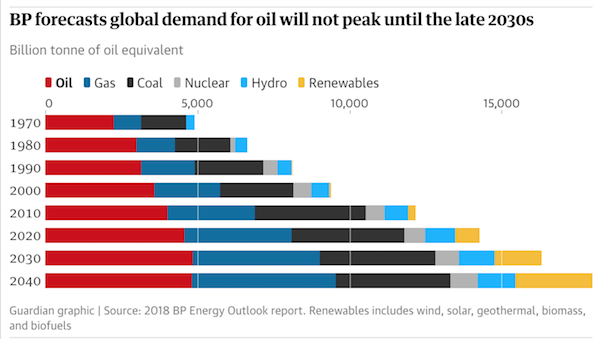
Vincent van Gogh Landscape with House and Ploughman 1889

I know, it’s sad if you need to open with the Onion. But that’s how sad things have become.
“..the 10% of survey participants who indicated otherwise did so because they didn’t consider those they disagreed with to actually be Americans..”
• 90% Of Americans Strongly Opposed To Each Other (Onion)
In a new study published Tuesday that surveyed U.S. residents about their attitudes toward current events, the Pew Research Center found that approximately 90 percent of Americans described themselves as strongly opposed to each other. “In the questionnaire we administered, nine out of 10 participants indicated they fundamentally disapproved of the actions currently being taken by their fellow citizens,” said polling analyst Babette Randolph, noting that the rate of opposition remained consistent across all 50 states and virtually every demographic regardless of age, gender, race, religion, or political identification. “The vast majority of poll respondents signaled they were dead set against the U.S. populace, condemning in forceful terms the way others have handled things over the past year and giving the people of their nation historically low ratings.” Randolph went on to note that the 10% of survey participants who indicated otherwise did so because they didn’t consider those they disagreed with to actually be Americans.

Stockman goes through the whole comedy act and leaves little standing. Prior to the “13 Russians”, the Mueller investigation seemed dead. So note the timing.
• Mueller’s Comic Book Indictment (David Stockman)
[..] with his comic book indictment, Robert Mueller has actually made himself a mortal threat to America’s democracy and national security. That’s because his indictment is unleashing a rabid anti-Russian mania in the Democratic party and turning flaming liberals and leftwing progressives, who used to form the backbone of the peace party in America, into outright war-mongers. The Donald tweeted over the weekend about Moscow “laughing its ass off” about the Mueller indictment, but we think he missed the mark. It is the Deep State on the banks of the Potomac that is bursting with glee – literally licking its collective chops – about the endless budget boondoggles now assured to be coming its way.
The neocons and military/industrial complex had already taken control of the GOP lock, stock and barrel. Then, his campaign rhetoric about “America First” notwithstanding, Trump abdicated to his empire-minded generals in order to concentrate on his Twitter account. And now in the wake of the RussiaGate hysteria being given a powerful new boost from Mueller’s comic book, the Dems are lining up to say we will see your $700 billion budget and crank it up from there. The truth is, there is a screaming fiscal crisis coming hard upon Imperial Washington. That’s owing to the $15 trillion of new deficits that are now built-in for the next decade – at the very time when the Fed has shut down is massive bond-buying experiment and the Baby Boom is hitting the social security and medicare rolls in droves.
Absent the RussiaGate hoax and the Dems descent into mindless, anti-Putin hysteria, there would have been a moment of maximum danger for the Deep State’s hideously inflated military, intelligence and surveillance operations. In the coming battle against fiscal collapse, they surely would have been on the fiscal chopping block like at no time since the aftermath of Vietnam in the 1970s. But rescue is now at hand. The Dems have been shell-shocked ever since the evening of November 8, 2016, and have worked themselves into deliriums about how it was all a big mistake enabled by Russian meddling and collusion with the Trump campaign. To a substantial degree, however, those narratives were on their last legs until the Mueller indictment came along. For anyone who takes the trouble to read it, of course, it’s just a potpourri of nonsense, marginalia and irrelevance.

Dick Bove. I know. But even he can’t make it all up.
• Foreigners Flock In As Buyers Of US Government Debt (CNBC)
Last week the United States Treasury Department released its latest data related to foreign buying of United States debt. It was a shocker. It showed that in the 12 months leading up to November 2016, the month that Donald Trump was elected president, foreigners had been net sellers of $339 billion in U.S. Treasurys. In the 12 months leading up to December 2017, they had shifted to being net buyers of $20 billion. Contrast this to the prior administration’s record. In November 2008, when Barack Obama was elected president, the trailing 12-month figures showed that foreigners had been net buyers of $301 billion in Treasurys. This dropped to the $339 billion outflow figure in November 2016, just noted, when he lost power. Putting the two sets of numbers together one sees that foreigners swinging $640 billion to the negative during the Obama presidency.
During the Trump presidency to date, foreigners swung positive by $359 billion. Wow!! It appears that foreign U.S. debt buyers are as enthused by the Trump agenda as much as domestic equity buyers are. Or, that the faith in the U.S. economic recovery is global in nature. The largest foreign holding of U.S. debt would be the combined portfolio of China and Hong Kong. It is about 6% of outstanding Treasury debt. This portfolio, if looked at year-over-year numbers, was up 1.5% in August, 2.1% in September, 6.1% in October, 11.1% in November and 10.4% in December. Overall, it grew by $145 billion. Other big buyers year over year were Saudi Arabia (up $47.1 billion), the United Kingdom (up $34.2 billion), Singapore (up $28.1 billion), India (up $26 billion), Switzerland (up $19.3 billion), Russia (up $15.6 billion) Korea (up $11.2 billion) and France (up $10.1 billion). The biggest sellers were Japan (down $47.1 billion) and Germany (down $14.7 billion).
Finally, of note, Ireland’s holdings jumped $51.3 billion possibly due to Brexit. The importance of these numbers cannot be understated. If one segregates the buyers of U.S. debt into its four main categories foreign buying is most important. Presently, it is believed that foreigners own 31.2% of outstanding U.S. debt. American households and businesses own 29.1%; Social Security and other government pension funds own 27.5%; and the Federal Reserve holds 14.2%. There is 2% double counting in the figures mainly in the amount held by Americans. This fiscal year due to the tax cut, higher interest rates and possibly other new fiscal programs, it is expected that the government must raise possibly another trillion dollars along with refinancing a portion of the $20 trillion already owed.


Err, Wait! We just saw they’re buying, and now they’re not?
• Foreign Investors Cut Treasury Buying As US Flogs Record Level Of Debt (MW)
As traders and analysts debate over who will harbor enough appetite to snap up $250 billion of debt sales this week, one group of investors has steadily retreated into the shadows — foreign bond-buyers. With the Federal Reserve halting its asset purchases several months ago, it’s unclear who will take up its place to soak up the deluge of issuance without demanding dramatically higher yields. An increase to spending caps and Republican tax cuts have escalated the Treasury Department’s borrowing needs, with some estimating more than $1 trillion of net issuance this year. Against that backdrop of increased supply, the diminished presence of a key bulwark to the bond market is troubling. “We expect that any increase in [foreign central bank] demand this year will be modest relative to the scale of supply, and that foreign private investor demand will be sporadic,” said strategists at Credit Suisse.
Foreign investors have slowly reduced their participation in Treasury auctions since the 2007-’09 financial crisis, according to Deutsche Bank. In 2008, in the throes of a global recession, foreign bond-buyers rushed into U.S. government paper, one of the largest liquid markets for safe assets in the world. From 2009 to 2011, Wall Street banks and international investors took down around 80% of the U.S. debt issued. But by 2017, foreign buyers took up 16% of the debt sold through auctions, compared with 29% in 2009. t’s not just auctions data that shows foreign investors are pulling back. The international share of the total U.S. debt fell to less than 45% in September 2017, down from 57% in December 2008. Though there was a slight uptick last year, for the most part the downtrend has remained intact.


With one source saying foreigners are buying, and the other denying that, no wonder it’s going to be a long year.
• It’s Going to Be a Long Year for Bond Traders (BBG)
It’s not even March yet, and bond investors probably can’t wait for the year to be over. The Bloomberg Barclays U.S. Aggregate Bond Index has fallen 2.12% since the end of December through Feb. 16, and there’s little on the horizon to suggest a rebound anytime soon. U.S. Treasuries fell across the board Tuesday as the government began flooding the market with supply to rebuild its cash balance and start paying for the recently enacted tax cuts. Investors were asked to digest $179 billion in Treasury bills and two-year notes in a matter of hours, resulting in the highest borrowing rates for the government since 2008. While that’s good news for savers who have suffered with near-zero rates since the financial crisis, it’s not so good for borrowers. Overall, the government is forecast to at least double its debt sales this year to more than $1 trillion- the most since 2010.

In a research note, the strategists at Goldman Sachs wrote that they now see 10-year Treasury yields, which were at 2.89% on Tuesday, rising to 3.25%, up from their prior forecast of 3%. And since Treasuries are the global benchmark, the firm also boosted its yield forecasts for German bunds, U.K. gilts and Japanese government bonds. The nonpartisan Committee for a Responsible Federal Budget said it expects the U.S. budget deficit to swell to $1.2 trillion in fiscal 2019 alone after the Trump administration enacted tax cuts late last year that will reduce federal revenue by $1.5 trillion over a decade. The auctions continue Wednesday, with the sale of $35 billion in five-year notes followed by the sale of $29 billion of seven-year notes on Thursday.

Central banks make for bigger crises.
• The Bear Still Cometh (Roberts)
In April, the current economic expansion will become the second longest in U.S. history. However, that period of expansion will also be the slowest, based on annualized economic growth rates, as well. Could the current economic expansion become the longest in U.S. history? Absolutely. Over the next several weeks, or even months, the markets can certainly extend the current deviations from long-term means even further. But such is the nature of every bull market peak, and bubble, throughout history as the seeming impervious advance lures the last of the stock market “holdouts” back into the markets. The correction over the last couple of weeks did little to correct these major extensions OR significantly change investor’s mental state from “greed” to “fear.”
As discussed above, the bullish trend remains clearly intact for now, but all “bull markets” end….always. Do not be mistaken, the next “bear market” is coming. Of that, there is absolute certainty. As the charts clearly show, “prices are bound by the laws of physics.” While prices can certainly seem to defy the law of gravity in the short-term, the subsequent reversion from extremes has repeatedly led to catastrophic losses for investors who disregard the risk. There are substantial reasons to be pessimistic about the markets longer-term. Economic growth, excessive monetary interventions, earnings, valuations, etc. all suggest that future returns will be substantially lower than those seen over the last eight years. Bullish exuberance has erased the memories of the last two major bear markets and replaced it with “hope” that somehow “this time will be different.”


Don’t think we really needs technical charts for that.
• Technical Charts Suggest Another Stock-Market Drop Is Coming (ElliottWave)
With the market rally experienced over the past week, many in the media are now reconsidering their recent perspective regarding the demise of the bull market. Not only did the market strike the minimal upside target we laid out for members a week ago — once we broke through 2646 on the Emini S&P 500 — it even exceeded our minimal target by about 25 points. However, just as the market has everyone now considering how much more upside we can see, I think we may be setting up for another drop to begin this week. Due to the lack of impulsive patterns evident off the recent lows in many of the charts I am following, it would suggest the stock market is likely going to see a retest of the prior lows, or a lower low before this wave (4) has run its course.
Again, I want to remind you that 4th waves are the most variable of the Elliott Wave 5-wave structure. For this reason, we almost have to expect many twists and turns, especially during the b-wave of that structure. Currently, we are still in the b-wave of this wave (4), and unless we see an impulsive drop below the 2700 support region on the S&P 500 SPX, -0.58% we may remain in this b-wave for the next several weeks. In other words, should we drop below the 2700 region this week in a corrective and overlapping fashion, we will likely be only dropping in a (b) wave within a larger b-wave, as presented in the attached charts in yellow. However, if the market does provide us with an impulsive structure below 2700 for wave 1 of the c-wave down, then we will likely be targeting the 2400 region within the next few weeks.
Yet, the drop we experienced on Friday off the high was not clearly the start of an impulsive structure. While the market has certainly struck the minimum target we set for this wave (4) between 2424 and 2539, the structure of the rally off that low is suggesting that this wave (4) will likely take more time and provide more whipsaw in the coming weeks. However, as long as we hold over the 2400 region support, my expectation is that we have a date with the 3011-3223 region for the S&P, which will likely be struck by the end of 2018 or early 2019. It will be at that point that I expect we can begin a 20%-30% correction.

Without exports we’re all dead?!
• Final Version Of TPP Trade Deal Dumps Rules The US Wanted (R.)
The final version of a landmark deal aimed at cutting trade barriers in some of the Asia-Pacific’s fastest-growing economies was released on Wednesday, signalling the pact was a step closer to reality even without its star member the United States. More than 20 provisions have been suspended or changed in the final text ahead of the deal’s official signing in March, including rules around intellectual property originally included at the behest of Washington. The original 12-member deal was thrown into limbo early last year when U.S. President Donald Trump withdrew from the agreement to prioritize protecting U.S. jobs. The 11 remaining nations, led by Japan, finalized a revised trade pact in January, called the Comprehensive and Progressive Agreement for Trans-Pacific Partnership (CPTPP). It is expected to be signed in Chile on March 8.
The deal will reduce tariffs in economies that together amount to more than 13% of the global GDP — a total of $10 trillion. With the U.S., it would have represented 40%. “The big changes with TPP 11 are the suspension of a whole lot of the provisions of the agreement. They have suspended many of the controversial ones, particularly around pharmaceuticals,” said Kimberlee Weatherall, professor of law at the University of Sydney. Many of these changes had been inserted into the original TPP 12 at the demand of U.S. negotiators, such as rules ramping up intellectual property protection of pharmaceuticals, which some governments and activists worried would raise the costs of medicine. The success of the deal has been touted by officials in Japan and other member countries as an antidote to counter growing U.S. protectionism, and with the hope that Washington would eventually sign back up.
“CPTPP has become more important because of the growing threats to the effective operation of the World Trade Organisation rules,” New Zealand Trade Minister David Parker said on Wednesday.

In reality, these farmers don’t care where workers come from, they just want them dirt cheap. Give them a good wage and the whole thing changes, you can get Britons to work for you.
• UK Farmers: Lack Of Migrant Workers Now ‘Mission Critical’ (G.)
Farmers are running out of patience with what they see as government inaction over the future availability of seasonal fruit and vegetable pickers, the environment secretary has been told. Michael Gove was confronted over the issue at the National Farmers’ Union annual conference, but told delegates that while he understood their plight he did not have the power to accede to their demands for a new deal for non-EU workers on temporary contracts on farms. Ali Capper, who chairs the NFU’s horticulture team, told Gove that the availability of workers to pick fruit and vegetables was now “mission critical for 2018”. Gove told her the NFU’s demand for clarity on labour was “powerfully and loudly” made but that the lead department in the matter was the Home Office, not his.
“It’s already the case that the supply of labour from EU27 countries is diminishing as their economies recover and grow. So, in the future, we will need to look further afield,” he added later, saying he had to abide by decisions in a collective government. Capper welcomed Gove’s acknowledgement that labour shortages were now so great that farmers needed to go beyond the EU, but said time was running out. “We just need action; without wanting to blaspheme, I’m sick of hearing ‘we understand the issue, we know you need access to non-EU and EU workers’,” she said. Meurig Raymond, the outgoing NFU president, told Gove that this was a critical issue for farming, citing a recent Guardian report of a fruit farmer in Herefordshire moving part of his business to China because of Brexit.

Yesh, like 5% more tax will work miracles.
• Vancouver’s Hot Housing Market Gets Tougher for Wealthy Chinese (BBG)
Vancouver, one of the hottest housing markets in North America, is getting a little tougher for wealthy Chinese buyers. British Columbia Finance Minister Carole James announced measures targeting foreign buyers and speculators in the first budget since her government was elected on a pledge to make housing more affordable for residents of Canada’s Pacific Coast province. Starting Wednesday, foreigners will pay the province a 20% tax on top of the listing value, up from 15% now, and a levy on property speculators will be introduced later this year, according to budget documents released Tuesday. The government will also crack down on the condo pre-sale market and beneficial ownership to ensure that property flippers, offshore trusts and hidden investors are paying taxes on gains.
Premier John Horgan faces formidable demands after taking power in a fiercely contested election last July. His New Democratic Party made expensive promises to topple the Liberals, whose 16-year-rule brought the fastest growth in Canada, but also surging property while incomes stagnated. Public outrage has surged amid perceptions that global capital seeking a stable sanctuary, especially from China, is driving double-digit gains in Vancouver, the country’s most expensive property market. “The expectations that we will do everything in our first budget are huge,” James told reporters in the capital Victoria. “Our goal is fairness – fairness for the people who live here, who work here and pay their taxes here.”

Dickens Redux. Very interesting overview of worker control since the 19th century.
• Amazon Tracks Its Workers Using Wristbands (Jacobin)
The latest scandal to emerge from Amazon’s warehouses centers on the company’s newly patented wristband, which gives it the ability to track and record employees’ hands in real time. Some have described the technology as a “dystopian” form of surveillance. Amazon has countered that journalists are engaging in “misguided” speculation. To hear the retail giant tell it, all the device does is move its inventory-tracking equipment from workers’ hands to their wrists — what’s the big deal? Given the level of surveillance and regimentation already in place in Amazon warehouses, the company isn’t completely off base. Currently, warehouse workers called pickers carry a scanner that directs them from product to product. All shift they race the countdown clock, which shows them how many seconds they have to find the item, place it in their trolley, and scan the barcode.
A variation on this method exists in warehouses where robots bring the shelves to workers. There, workers stand in place as stacks of products present themselves one by one. For ten and a half hours, they must stoop and stretch to retrieve an item every nine seconds. The scanners control workers’ behavior by measuring it, preventing slowdowns and allowing managers to create new performance benchmarks. Quick workers raise the bar for everyone, while slow workers risk losing their job. The wristbands introduce a wrinkle to this regimentation, monitoring not just the task but the worker herself. It’s a distinction managers first became obsessed with more than a century ago and crystallized in the “scientific management” movement of the period. Amazon’s peculiar culture notwithstanding, the wristbands in many ways don’t offer anything new, technologically or conceptually. What has changed is workers’ ability to challenge this kind of surveillance.
The first workers required to mechanically record their location while working were the nineteenth-century watchmen. Hired to walk around plants at night, watchmen would look out for irregularities like fires, thieves, open windows, or bad odors. But employers had a problem: who would watch the watchmen? In 1861, they received their answer when the German inventor John Bürk patented one of the first practicable time detectors — a huge watch with a strip of paper running around the casing’s interior. Employers would chain different keys in each room of their property. When watchmen entered a room, they would have to insert the key into the watch, making an indentation on the strip of paper hidden inside. Since each key had a unique pattern, and since the strip of paper was tied to the hands of the clock, the employer could come in the next morning, pull the strip out, and examine a record of when the watchman visited each room.

Sorry, NYT, it’s not the Republicans who cause this. It’s the Ponzi models. But a good warning: don’t count on the safety net.
• Come the Recession, Don’t Count on That Safety Net (NYT)
What will President Trump’s first recession look like? The question is not that far-fetched. The current economic expansion is already the third longest since the middle of the 19th century, according to the National Bureau of Economic Research. If it makes it past June of next year it will be the longest on record. While the economy is hardly booming, trundling along at an annual growth rate of about 2.5%, investors are getting jittery. The stock market tumble after the government reported an uptick in wages last month suggests just how worried investors on Wall Street are that the Federal Reserve might start increasing interest rates more aggressively to forestall inflation. And the tax cuts and spending increases pumped into an expanding economy since December shorten the odds that the Fed will step in forcefully in the not-too-distant future to bring an overheated expansion to an end.
It is hardly premature to ask, in this light, how the Trump administration might manage the fallout from the economic downturn that everybody knows will happen. Unfortunately, the United States could hardly be less prepared. Not only does the government have precious few tools at its disposal to combat a downturn. By slashing taxes while increasing spending, President Trump and his allies in Congress have further boxed the economy into a corner, reducing the space for emergency government action were it to be needed. The federal debt burden is now the heaviest it has been in 70 years. And it is expected to get progressively heavier, as the budget deficit swells.
To top it off, a Republican president and a Republican Congress seem set on completing the longstanding Republican project to gut the safety net built by Presidents Franklin D. Roosevelt and Lyndon B. Johnson, which they blame for encouraging sloth, and replace it with a leaner welfare regime that closely ties government benefits to hard work. As noted in a new set of proposals by leading academics to combat poverty, published Tuesday by the Russell Sage Foundation, anti-poverty policies and related social-welfare benefits over the last quarter-century “have largely shifted from a system of guaranteed income support to a work-based safety net.”

We waste oil to make petrol, and we waste it the make plastics. It’s like there’s a big plan to get rid of the stuff ASAP. Like nature developed mankind to get rid of a carbon imbalance issue.
• Plastic Bans Worldwide Will Dent Oil Demand Growth – BP (G.)
Bans around the world on single use plastic items such as carrier bags will dent growth in oil demand over the next two decades, according to BP. However, the UK-headquartered oil and gas firm said it still expects the global hunger for crude to grow for years and not peak until the late 2030s. Spencer Dale, the group’s chief economist, said: “Just around the world you see increasing awareness of the environmental damage associated with plastics and different types of packaging of one form of another. “If you live in the UK that’s clearly been an issue, but it’s not just a UK-specific thing; you see it worldwide, for example China has changed some of its policies.” Theresa May has branded plastic waste an environmental scourge, and MPs have called for charges on plastic bags to be extended to disposable coffee cups.
Dale predicted such measures around the world could mean 2m barrels per day lower oil demand growth by 2040. But he said single use plastics were only about 15% of all non-combusted oil, which is used for petrochemicals, an industry that BP expects to be a big driver of global growth in crude demand. The company’s energy outlook report, published on Tuesday, forecasts demand peaking at about 110m barrels per day between 2035 and 2040, up from . Much of the growth comes from rising prosperity in the developing world. But Dale said his position was that “nobody knows when it’s going to peak because small changes can shift it by five to 10 years”.


Robert Hunziker first says that only drastic measures will do, and then blames the US for not adhering to CON21, which has no such drastic measures. It’s hard.
Imagine a scenario with no temperature difference between the equator and the North Pole. That was 12 million years ago when there was no ice at either pole. In that context, according to professor James G. Anderson of Harvard University, carbon in the atmosphere today is the same as 12 million years ago. The evidence is found in the paleoclimate record. It’s irrefutable. Meaning, today’s big meltdown has only just started. And, we’ve got 5 years to fix it or endure Gonzo World. That’s one big pill to swallow! That scenario comes by way of interpretation of a speech delivered by James G. Anderson at the University of Chicago in January 2018 when he received the Benton Medal for Distinguished Public Service, in part, for his groundbreaking research that led to the Montreal Protocol in 1987 to mitigate damage to the Ozone Layer.
At the time, Anderson was the force behind the most important event in the history of atmospheric chemistry, discovering and diagnosing Antarctica’s ozone hole, which led to the Montreal Protocol. Without that action, ramifications would have been absolutely catastrophic for the planet. Stratospheric ozone is one of the most delicate aspects of planet habitability, providing protection from UV radiation for all life forms. If perchance the stratospheric ozone layer could be lowered to the ground, stacking the otherwise dispersed molecules together, it would be 1/8th of an inch in thickness or the thickness of two pennies. That separates humanity from burning up as the stratospheric ozone absorbs 98% of UV radiation. In his acceptance speech, Anderson, Harvard professor of atmospheric chemistry, now warns that it is foolhardy to assume we can recover from the global warming leviathan simply by cutting back emissions.
Accordingly, the only way humanity can dig itself out of the climate change/global-warming hole is by way of a WWII type effort with total transformation of industry off carbon and removal of carbon from the atmosphere within five years. The situation is so dire that it requires a worldwide Marshall Plan effort, plus kneeling in prayer. Additionally, Anderson says the chance of permanent ice remaining in the Arctic after 2022 is zero. Already, 80% is gone. The problem: Without an ice shield to protect frozen methane hydrates in place for millennia, the Arctic turns into a methane nightmare. This is comparable to poking the global warming monster with a stick, as runaway global warming (“RGW”) emerges from the depths. Interestingly enough, the Arctic Methane Emergency Group/UK, composed of distinguished scientists, seems to be in agreement with this assessment.









Home › Forums › Debt Rattle February 21 2018